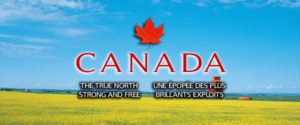
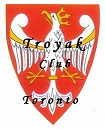
TROYAK EXECUTIVE TEAM is informing all members, colleagues, collectors, and Polonia at large, that Club meetings taking place at John Paul II Polish Cultural Centre, 4300 Cawthra Rd. (just south of Hwy. 403), Mississauga, Ontario. The new members are always welcome. www.polishculturalcentre.ca
ADRES SPOTKAÑ KLUBOWYCH ! Zarząd Główny Klubu “Troyak” informuje wszystkich członków kolekcjonerów, sympatyków oraz całą Polonię, że spotkania klubowe odbywają się w Polskim Centrum Kultury im. Jana Pawła II, przy 4300 Cawthra Rd. (na południe od autostrady 403), Mississauga, Ontario. Zapraszamy nowych członków do prężnego. Klubu “Troyak”. www.polishculturalcentre.ca

“TROYAK” CLUB NEXT MEETINGS …
NASTĘPNE SPOTKANIA KLUBU “TROYAK” …
27th September 2020 @ 4:30 p.m.

4th October 2020 @ 9:00 a.m. to 4:00 p.m. …
Mississauga’s 5th Annual Fall Show
25th October 2020 @ 4:30 p.m.
29th November 2020
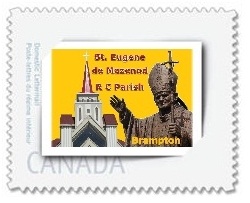
December 2020 @ Happy Holidays !

17th January 2021 @ 4:30 p.m. … Annual General Meeting
31st January 2021; 28th February 2021

7th March 2021 …
XVIII Polish – Canadian Coin, Stamp & Collectibles Show 2021
28th March 2021 @ 4:30 p.m.
25th April 2021
30th May 2021; 27th June 2021

July & August 2021 – Summer break … Letnie wakacje …


Pejzaż polski i koń – Ludwik Maciąg
Polish landscape and horse – Ludwik Maciąg
www.poczta-polska.pl
Wartość: A … autor projektu kartki: A. Sancewicz;
liczba znaczków: 1; nakład: 8 000 szt.;
technika druku: offset; format kartek: 148 x 105 mm;
data wprowadzenia do obiegu: 30.05.2020 r.
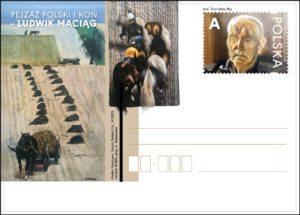
Polish landscape and horse – Ludwik Maciąg …
denomination: 3,30 PLN; number of stationeries in set: 1;
print run: 8.000 pcs; printing technique: offset;
card size: 148 x 105 mm; author: Agnieszka Sancewicz;
release date: 30th May 2020.

100. Rocznica powstania Związku Polskich Kawalerów Maltańskich
100th Anniversary of the Polish Knights of Malta Association
www.poczta-polska.pl
Wartość: A … autor projektu kartki: M. Dąbrowska;
liczba znaczków: 1; nakład: 8 000 szt.;
technika druku: offset; format kartki: 148 x 105 mm;
data wprowadzenia do obiegu: 05.06.2020 r.
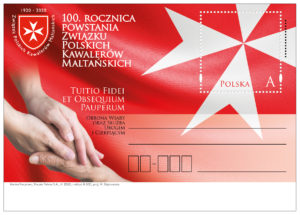
100th Anniversary of the Polish Knights of Malta Association …
denomination: 3,30 PLN; number of stationeries in set: 1;
print run: 8.000 pcs; printing technique: offset;
card size: 148 x 105 mm; author: Marzanna Dąbrowska;
release date: 05th June 2020.

80. Rocznica Pierwszego Transportu Polaków do KL Auschwitz
80th Anniversary of the First Transport of Poles to Auschwitz
www.poczta-polska.pl
Dnia 14 czerwca 2020 r. została wprowadzona do obiegu kartka pocztowa z nadrukowanym znakiem opłaty pocztowej, emisji: 80. Rocznica Pierwszego Transportu Polaków do KL Auschwitz. Wartość nominalna znaku opłaty pocztowej z oznaczeniem literowym A odpowiada wartości nominalnej znaczka pocztowego używanego do uiszczenia opłaty za ekonomiczną przesyłkę listową nierejestrowaną, w tym kartkę pocztową, w obrocie krajowym, w formacie S o masie do 500 g. W prawym górnym rogu strony adresowej kartki nadrukowano znak opłaty pocztowej, na którym przedstawiono czerwony trójkąt z białą literą ,,P”, symbolizujący oznaczenie nadawane w KL Auschwitz polskim więźniom politycznym; tło znaczka stanowią biało-niebieskie pionowe pasy symbolizujące pasiak, a umieszczone po środku pasy biały oraz czerwony nawiązują do polskich barw narodowych; na pierwszym planie widnieją druty kolczaste.
Wzdłuż górnej krawędzi znaczka umieszczono oznaczenie wartości: A oraz napis: POLSKA. W części ilustracyjnej kartki umieszczono nazwę emisji ,,80. ROCZNICA PIERWSZEGO TRANSPORTU POLAKÓW DO KL AUSCHWITZ” oraz zdjęcie torów kolejowych, symbolizujących drogę transportu więźniów do obozu. W dolnej części kartki umieszczono napis: 14 czerwca 1940 r. z Tarnowa wyruszył pierwszy transport polskich więźniów politycznych do niemieckiego nazistowskiego obozu koncentracyjnego i zagłady KL Auschwitz. Kartki o wymiarach 148 x 105 mm wydrukowano jednostronnie, techniką offsetową, na kartonie białym, w nakładzie 8000 sztuk. Autor projektu kartki: Roch Stefaniak.

80th Anniversary of the First Transport of Poles to Auschwitz …
denomination: 3,30 PLN ; number of stationeries in set: 1;
print run: 8.000 pcs; printing technique: offset;
card size: 148 x 105 mm; author: Roch Stefaniak;
release date: 14th June 2020.

Zwierzęta małe i duże
Small and large animals
www.poczta-polska.pl
W dniu 15 czerwca 2020 r. zostały wprowadzone do obiegu znaczki pocztowe o wartości 3,30 zł emisji “Zwierzęta małe i duże”. Na znaczkach przedstawiono zwierzęta z Warszawskiego Ogrodu Zoologicznego:
Na pierwszym znaczku, o nominale 3,30 zł – Gepard, Acinonyx jubatus; wzdłuż górnej krawędzi znaczka umieszczono napis: POLSKA pod napis POLSKA umieszczono napis: Gepard, Acinonyx jubatus, samica Wilma, Jasmine i Jafar ; wzdłuż lewej krawędzi umieszczono nazwę emisji: Zwierzęta małe i duże; a w lewym dolnym rogu umieszczono oznaczenie wartości 3,30 zł; Na drugim znaczku, o nominale 3,30 zł – Kangur rudy, Macropus rufus; wzdłuż górnej krawędzi znaczka umieszczono nazwę emisji: Zwierzęta małe i duże; pod napisem Zwierzęta małe i duże umieszczono napis: Kangur rudy, Macropus rufus, samica Hipka i Hopek ; wzdłuż lewej krawędzi umieszczono napis: POLSKA ; a w lewym dolnym rogu umieszczono oznaczenie wartości 3,30 zł;
Na trzecim znaczku, o nominale 3,30 zł – Wielbłąd dwugarbny, Camelus bactrianus; w lewym górnym rogu znaczka umieszczono oznaczenie wartości 3,30 zł: pod oznaczeniem wartości umieszczono napis: Wielbłąd dwugarbny, Camelus bactrianus, samica Goplana i Józefina; wzdłuż prawej krawędzi umieszczono napis :POLSKA; wzdłuż dolnej krawędzi umieszczono nazwę emisji: Zwierzęta małe i duże; Na czwartym znaczku, o nominale 3,30 zł – Lemur katta, Lemur cattta; wzdłuż górnej krawędzi znaczka umieszczono oznaczenie wartości 3,30 zł oraz nazwę emisji: Zwierzęta małe i duże ;pod nazwą emisji umieszczono napis: Lemur katta, Lemur catta, samica Tola i Bella; wzdłuż lewej krawędzi znaczka umieszczono napis: POLSKA
Znaczki wydrukowano techniką offsetową + sitodruk, na papierze fluorescencyjnym, w formatach: 31,25 x 43 mm, w nakładzie po 180 000 sztuk każdego znaczka. Arkusze sprzedażne zawierają 12 znaczków + 4 przywieszki. Z tej okazji zostały wydane 2 koperty FDC. Autor projektu: Andrzej Gosik.
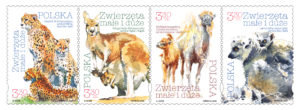
Small and large animals …
denomination: 3,30 PLN, 3,30 PLN, 3,30 PLN, 3,30 PLN
number of stamps in set: 4; 12 stamps in sheet with 4 label;
print run: 180.000 pcs; stamp size: 31,25 x 43 mm;
printing technique: offset and silkscreen
author: Andrzej Gosik; release date: 15th June 2020.

100-lecie dziennika Rzeczpospolita
100th Anniversary of the Rzeczpospolita daily
www.poczta-polska.pl
W dniu 15 czerwca 2020 roku został wprowadzony do obiegu znaczek pocztowy o wartości 3,30 zł emisji “100-lecie dziennika Rzeczpospolita”. Na znaczku przedstawiono pióro na tle pisma odręcznego oraz fragment klawiatury komputerowej jako symbole historycznej i współczesnej metody stosowanej w komunikacji prasowej; Znaczki wydrukowano techniką offsetową, na papierze fluorescencyjnym, w formacie 43 x 31,25 mm, w nakładzie 144 000 sztuk. Arkusz sprzedażny zawiera 12 sztuk znaczków. Z tej okazji została wydana koperta FDC. Autor projektu znaczka: Piotr Waliszewski. Autor projektu koperty i datownika FDC: Roch Stefaniak.
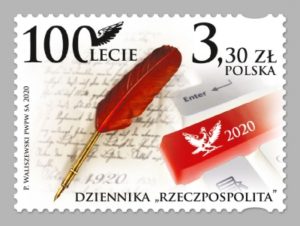
100th Anniversary of the Rzeczpospolita daily …
denomination: 3,30 PLN; number of stamps in set: 1;
print run: 144.000 pcs; printing technique: offset;
stamp size: 43 x 31,25 mm; 12 stamps in sheet;
number of FDC: 1; author: Piotr Waliszewski,
Roch Stefaniak; circulation date: 15th June 2020.

Historia Monety Polskiej – złotówka gdańska Augusta III
www.nbp.pl
Narodowy Bank Polski jest centralnym bankiem państwa odpowiadającym za politykę pieniężną i stabilność cen. Jego funkcje określa Konstytucja Rzeczypospolitej Polskiej i ustawa o NBP. NBP ma wyłączne prawo emisji pieniądza. Jako bank centralny nie prowadzi rachunków bankowych obywateli, nie przyjmuje od nich lokat, nie udziela kredytów. Prowadzi natomiast obsługę budżetu państwa, a także podmiotów sektora finansów publicznych. Gromadzi rezerwy walutowe państwa i zarządza nimi. Pełni funkcję banku banków, tworząc warunki do działania systemu bankowego. Jest również jednym z najważniejszych ośrodków naukowo-analitycznych w dziedzinie ekonomii i rynków finansowych. 16 czerwca 2020 roku Narodowy Bank Polski wprowadził do obiegu srebrną monetę o nominale 20 zł z serii „Historia monety polskiej” – złotówka gdańska Augusta III.
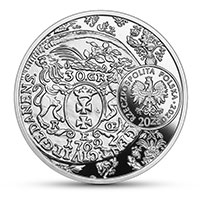
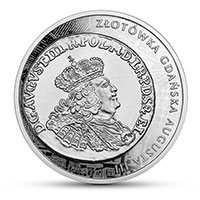
Nominał 20 zł … metal: Ag 925/1000; stempel: lustrzany; średnica: 38,61 mm; masa: 28,28 g; brzeg (bok): gładki; nakład: do 12 000 szt.; Projektant: Dominika Karpińska-Kopiec; Emitent: NBP; Na zlecenie NBP monetę wyprodukowała Mennica Polska S.A.
Epoka saska to okres upadku polskiej monety. Praktycznie rzecz biorąc, monet wówczas w Rzeczypospolitej nie bito. Jeszcze bowiem w 1685 roku sejm podjął uchwałę o zamknięciu mennic. Nie znaczy to jednak, że nie ma monet noszących imiona i tytuły obu królów z dynastii saskiej – Augusta II (1697–1733) i jego syna Augusta III (1733–1763). Monety takie były przez tych władców emitowane, ale na terenie Saksonii. Tam też bili oni – z polskimi herbami – monety saskie. Trzeba również wspomnieć o fałszowaniu polskich monet przez króla pruskiego Fryderyka II i o szóstakach litewskich z lat 1706–1707 wykonanych w Moskwie. Zakaz działalności menniczej w Rzeczypospolitej nie obejmował Prus Królewskich. Spośród bitych tam monet Augusta III będzie nas interesować pięknie wykonana gdańska złotówka (gulden) na stopę pruską o nominale 30 groszy z 1762 roku.
Na awersie ma ona ukoronowane popiersie króla zwrócone w prawo, z Orderem Złotego Runa na szyi. W otoku legenda: D[ei] G[ratia] AVGVST[us] III R[ex] POL[oniarum] M[agnus] D[ux] L[ithuaniae] R[ussiae] P[russiae] D[ux] S[axoniae] & EL[ector], czyli z Bożej łaski August III król Polaków, wielki książę litewski, ruski, pruski, książę saski i elektor. Na rewersie umieszczono wielki herb Gdańska (owalna tarcza trzymana przez lwy). Nad nim nominał: 30 GR[oszy] oraz wieniec. Pod herbem inicjały mincmistrza gdańskiego Rudolfa Ernesta Oeckermanna: R – E – Œ i data 1762. W otoku legenda: MON[eta] ARGENT[ea] CIVIT[atis] GEDANENS[is], a więc: Moneta srebrna miasta Gdańska. Na awersie nowej monety pamiątkowej głównym elementem jest rewers wyżej opisanej złotówki gdańskiej z 1762 roku z herbem miasta. Obok występuje okrągła metryczka z wizerunkiem orła ustalonym dla godła Rzeczypospolitej Polskiej, napisem: RZECZPOSPOLITA POLSKA, rokiem emisji: 2020 oraz nominałem: 20 ZŁ. W tle widzimy wzór z płaszcza koronacyjnego Augusta III dobrze korelujący z ozdobami herbu Gdańska. Na rewersie umieszczono awers tejże złotówki z portretem królewskim. Tłem zaś jest laserowy poddruk fragmentu planu Warszawy z 1762 roku. Został on częściowo przykryty legendą: ZŁOTÓWKA GDAŃSKA AUGUSTA III. Informacja: Stanisław Suchodolski.

History of Polish Coin – The Gdansk Złoty of Augustus III
www.nbp.pl
Narodowy Bank Polski is the central bank of the State, responsible for its monetary policy and price stability. The Bank’s functions are described in the Constitution of the Republic of Poland and the Act on NBP. NBP holds the exclusive right to issue the currency of the Republic of Poland. As the central bank, it does not provide accounts for the general public, accept deposits from or extend loans to individuals. It acts as a banker to the State budget and public sector entities. NBP also holds and manages the foreign exchange reserves of the State. Finally, it functions as a banker to banks, creating conditions for the operation of the Polish banking system. Narodowy Bank Polski is one of the most important research and analytical centres in the fields of economics and financial markets. On 16 June 2020, Narodowy Bank Polski issued into circulation a silver coin of the series “History of Polish Coin” – The Gdansk Złoty of Augustus III, with a face value of 20 złoty.


Face value 20 zł … Metal: Ag 925/1000; Finish: proof; Diameter: 38.61 mm; Weight: 28.28 g; Edge: plain; Mintage: up to 12,000 pcs; Designer: Dominika Karpińska-Kopiec; Issuer: NBP; The coins, commissioned by NBP, were struck by Mennica Polska S.A.
The Saxon era is a period marking the fall of the Polish coin. Practically speaking, coins were not struck in the Commonwealth at that time. As early as in 1685 the Sejm passed a resolution to close the mints. However, this does not mean that there are no coins bearing the names and titles of both kings of the Saxon dynasty – Augustus II the Strong (1697– 1733) and his son, Augustus III (1733–1763). Such coins were issued by these rulers, but in the territory of Saxony. Saxon coins with Polish coats of arms were also struck there. One should also recall the Polish coins that were falsified by the King of Prussia, Frederick II, and the Lithuanian szóstaks (six-grosz) produced in the years 1706–1707 in Moscow. The ban on minting operations in theCommonwealth did not cover Royal Prussia. Among thecoins of Augustus III struck there, we are interested in the beautifully made Gdansk złoty (gulden) made at Prussian standard with the denomination of 30 grosz of 1762.
On the obverse it has the crowned bust of the king facing to the right, with the Order of the Golden Fleece around his neck. Along the rim, the legend: D[ei] G[ratia] AVGVST[us] III R[ex] POL[oniarum] M[agnus] D[ux] L[ithuaniae] R[ussiae] P[russiae] D[ux] S[axoniae] & EL[ector], in other words, By the grace of God Augustus III, King of Poland, Grand Duke of Lithuania, Russia, Prussia, Duke of Saxony and Prince-Elector. On the reverse was the great coat of arms of Gdansk (an oval shield held by two lions). Above it, the face value: 30 GR[osz] and a wreath. Below the coat of arms, the initials of the Gdansk master of the mint Rudolf Ernest Oeckermann: R РE РΠand the date 1762. Along the rim, the legend: MON[eta] ARGENT[ea] CIVIT[atis] GEDANENS[is], in other words: Silver coin of the city of Gdansk.
The main element on the obverse of the new commemorative coin is the reverse of the Gdansk złoty of 1762 described above, with the coat of arms of the city. Next to it is a circular imprint with the image of the Eagle established as the state emblem of the Republic of Poland, an inscription: Rzeczpospolita Polska (Republic of Poland), the year of issue: 2020 and the face value: 20 ZŁ. In the background can be seen a pattern from the coronation robe ofAugustus III, which complements the decorations of the Gdansk coat of arms. The obverse of the Gdansk złoty, with the portrait of the king, is located on the reverse of the coin. The background is a laser underprint of a fragment of the plan of Warsaw of 1762. Itis partly covered by the legend: ZŁOTÓWKA GDAŃSKA AUGUSTA III. Info: Stanisław Suchodolski.


Eid: PermanentTM Domestics rate stamp
www.canadapost.ca
Send your wishes for a blessed Eid with this booklet of 10 PermanentTM domestic rate stamps. Inspired by traditional Islamic geometric art, the stamp wishes you and your loved ones Eid Mubarak, “Have a blessed Eid,” in calligraphy. Eid al-Fitr and Eid al-Adha are two of the most important festivals celebrated by Muslims worldwide. Eid-al-Fitr marks the end of the holy month of Ramadan, during which many Muslims fast from sunrise to sunset. Eid al-Adha signals the end of the Hajj pilgrimage to Mecca. Both celebrations can last several days and include congregational prayers, lavish meals, the gathering of family and friends, giving of gifts, and acts of charity. In 2020, they begin on May 23 and July 30, respectively. Mark your Eid celebrations with this collectible Official First Day Cover… Quantity Produced: 7,000; Dimensions: 190 mm x 112 mm. Inspired by traditional Islamic geometric art, the stamp wishes you and your loved ones Eid Mubarak, “Have a blessed Eid,” in calligraphy. The cancel location is Toronto, ON.
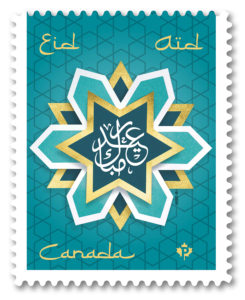
Stamp Value: PermanentTM (domestic rate) … Stamp Designer:
Lionel Gadoury, Dave Hurds, Muneeb Khatana | Context Creative;
Quantity Produced: 130,000; Dimensions: 28 mm x 35 mm;
Issue Date: April 24, 2020.


2020 … $3 Pure Silver Coloured Coin –
Western Lily: Floral Emblems of Canada: Saskatchewan
www.mint.ca www.canadapost.ca www.saskatchewan.ca
With its petals opened wide to soak up the sun, the boldly coloured western red lily easily stands out on our eighth Floral Emblems of Canada coin. Saskatchewan’s official flower is the image of summer beauty on the reverse, where an antique jewellery-inspired design provides an elegant frame for our floral-themed portrait.
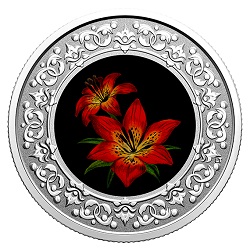
Face value: 3 dollars … Composition: 99.99% Pure Silver;
Mintage: 4,000; Weight: 7.96 g; Diameter: 27 mm;
Finish: Reverse Proof; Edge: serrated; Certificate: serialized;
Artist: Lisa Thomson-Khan (reverse); Susanna Blunt (obverse).
Design: The reverse design by Canadian artist Lisa Thomson-Khan features a colour portrait of the official floral emblem of Saskatchewan, the western red lily (Lilium philadelphicum). The obverse features the effigy of Her Majesty Queen Elizabeth II by Susanna Blunt.
Did you know… *** Also known as the prairie lily, the western red lily can be found from British Columbia east to Quebec, though it is less abundant due to agriculture and land development. *** In Saskatchewan, it’s illegal to remove it from the wild—in fact, picking the flowers weakens the plant and the lily will die if its food-producing leaves are removed. *** In addition to the province’s flag, western red lilies are also present in Saskatchewan’s coat of arms. You’ll find one in the crest (the beaver holds one in its paw), on the pendant worn by the deer supporter, and several flowers are entwined with the scroll beneath the two supporters. It also inspired the red colour used in the coat of arms.

2020 … $3 Pure Silver Coloured Coin –
Wild Rose: Floral Emblems of Canada: Alberta
www.mint.ca www.canadapost.ca www.alberta.ca
Every summer, the fragrant wild rose colours Alberta’s landscape so that everywhere you look, there’s a profusion of pink—a sight that proves you’re in Wild Rose Country. Our ninth Floral Emblems of Canada presents a close view of Alberta’s official flower in peak bloom. This sun-loving shrub is named for the flowers that appear on prickly stems in late June or July. And just like Manitoba, Alberta adopted its floral emblem democratically: the final choice was made by schoolchildren in 1930, a quarter century after the mountainous province joined Confederation.
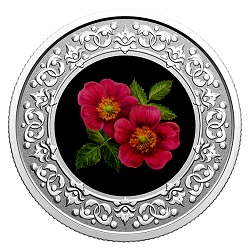
Face value: 3 dollars … Composition: 99.99% Pure Silver;
Mintage: 4,000; Weight: 7.96 g; Diameter: 27 mm;
Finish: Reverse Proof; Edge: serrated; Certificate: serialized;
Artist: Lisa Thomson-Khan (reverse); Susanna Blunt (obverse).
Design: The reverse design by Canadian artist Lisa Thomson-Khan features a stylized floral pattern on the outer ring, while the inner core features a colour portrait of the official floral emblem of Alberta, the wild rose (Rosa acicularis). The obverse features the effigy of Her Majesty Queen Elizabeth II by Susanna Blunt.
Did you know… *** The scientific name acicularis means “prickly.” It’s a fitting name for a small shrub rose known for its thorn-covered stems. *** After an Edmonton newspaper raised the idea of adopting a provincial flower, The Women’s Institute championed the idea and the final choice fell to Alberta’s students. The wild rose was officially designated Alberta’s floral emblem on March 21, 1930. *** It’s one of the most beloved symbols of Alberta but the wild rose grows naturally in many regions of Canada, from British Columbia to Quebec. *** Its marble-sized rosehips and flower petals are edible and are often used to make jams, jellies and tea. Indigenous peoples have traditionally used the wild rose to treat a number of ailments, from bee stings to muscle and stomach pains.

2020 … $3 Pure Silver Coloured Coin –
Pitcher Plant: Floral Emblems of Canada:
Newfoundland and Labrador
www.mint.ca www.canadapost.ca www.gov.nl.ca
A Newfoundland symbol that predates Confederation, the pitcher plant (Sarracenia purpurpea) gets a lot of attention due to its carnivorous nature. But the resilience of this wetland species, and the beauty this coin so clearly displays, are the qualities that have made it an ideal emblem for the people of Newfoundland and Labrador since 1954.
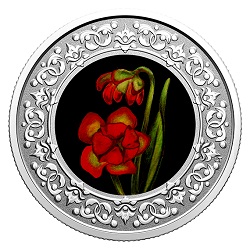
Face value: 3 dollars … Composition: 99.99% Pure Silver;
Mintage: 4,000; Weight: 7.96 g; Diameter: 27 mm;
Finish: Reverse Proof; Edge: serrated; Certificate: serialized;
Artist: Lisa Thomson-Khan (reverse); Susanna Blunt (obverse).
Design: The reverse design by Canadian artist Lisa Thomson-Khan features a coloured portrait of the official floral emblem of Newfoundland and Labrador, the pitcher plant (Sarracenia purpurea), surrounded by a stylized floral pattern. The obverse features the effigy of Her Majesty Queen Elizabeth II by Susanna Blunt.
Did you know… *** It is one of several species of carnivorous plants that are native to Canada. You’ll find it in wetlands across the country, but it is more famously associated with the bogs and marshes of Newfoundland and Labrador. *** The pitcher plant secretes a sweet substance to lure its insect prey. Tiny hairs trap the insects in the rainwater-filled tubular leaves and the insects (even flying ones) eventually drown. Enzymes and microorganisms then dissolve the prey to nourish the plant. *** The pitcher plant first appeared on Newfoundland’s one-cent coin in 1865 — that’s two years before the Dominion of Canada was established. Before becoming Canada’s youngest province in 1949, Newfoundland issued its own coins until 1947, and all coins dated 1940 to 1947 were struck at our Ottawa facility. *** In 1954, the Newfoundland Cabinet designated the pitcher plant as the official provincial flower. Today, a stylized illustration of the flower features prominently in the province’s logo.

2020 … $50 Pure Silver Coin with Rhodium
– Maple Leaves in Motio
www.mint.ca www.canadapost.ca
Never before have we applied two platings to the same coin using selective intricate plating technology. Our beloved maple leaf takes centre stage in gold plate that pops against the black rhodium that fills the entire background with a dark, fluid transparency—even the finest details shine through! Two more maple leaves round out this spectrum of precious metals with the cool shine of pure silver. This coin is a long-standing favourite among collectors, but with this year’s double-plating breakthrough, it’s bolder and more beautiful than ever—a work of art in its own right anyone would be proud to own! “I wanted to showcase the maple leaf in a totally new way, and experimented by drawing white over black. I had seen the Mint’s coins with black rhodium, and was pleasantly surprised when they applied it here, plus gold plating. It’s beautiful!” Joel Kimmel, Illustrator.
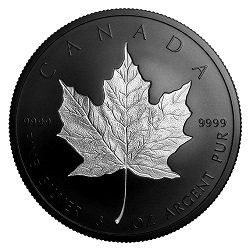
Face value: 50 dollars … Composition: 99.99% Pure Silver;
Mintage: 1,000; Finish: proof; Weight: 157.6 g; Diameter: 65.25 mm;
Edge: serrated; Certificate: serialized:
Artist: Joel Kimmel (reverse), Susanna Blunt (obverse).
Design: A gold-plated maple leaf is the commanding focal point of this striking design that also features black rhodium plating to deliver a stunning contrasting effect. The central gold leaf overlaps two silver maple leaves at its base, while a background of finely engraved maple leaves is visible through the black rhodium plating. Maple sprigs and buds in solid black serve as a filigree ornamentation that frames the leaves within the circumference of the coin. Designed by Canadian artist Joel Kimmel. The effigy of Her Majesty Queen Elizabeth II by Susanna Blunt in silver with the background leaf pattern and black rhodium plating filling the remainder of the field. … “I’ve wanted to combine gold plate with black rhodium for a long time, but having two metals bump up against each other in this way is a huge technical challenge. Our team, combined of engineers and the sole engraver Eric Boyer, rose to the occasion and the result is more breathtaking than I could have imagined.” Matt Eggink, Product Manager.
Did you know… Black rhodium is a rare member of the platinum group of metals. It is uniquely dark and shiny, and has traditionally been valued by jewellers for the avant-garde impact it can bring to engraved designs. 10 native maple species grow throughout Canada, but the National Flag features the leaf from the sugar maple, the best source for Canada’s world-renowned syrup. Maple syrup was a staple in Indigenous communities. Algonquian people collected sap in birchbark baskets (makak) before transferring it to 380 L moose-skin reservoirs. Like the three metals of this coin that range from light to very dark, maple syrup has its own colour spectrum. The darker the colour, the stronger the taste. Gold syrups are the classic treat for pancakes and desserts, amber is best for cooking, while very dark maple syrup is used as a commercial ingredient.


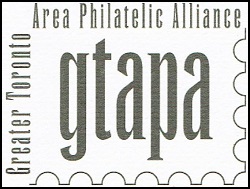
www.gtapa.org
The GTAPA is committed to promote and
stimulate the art of philately to all ages for fun,
culture, education and friendship.


